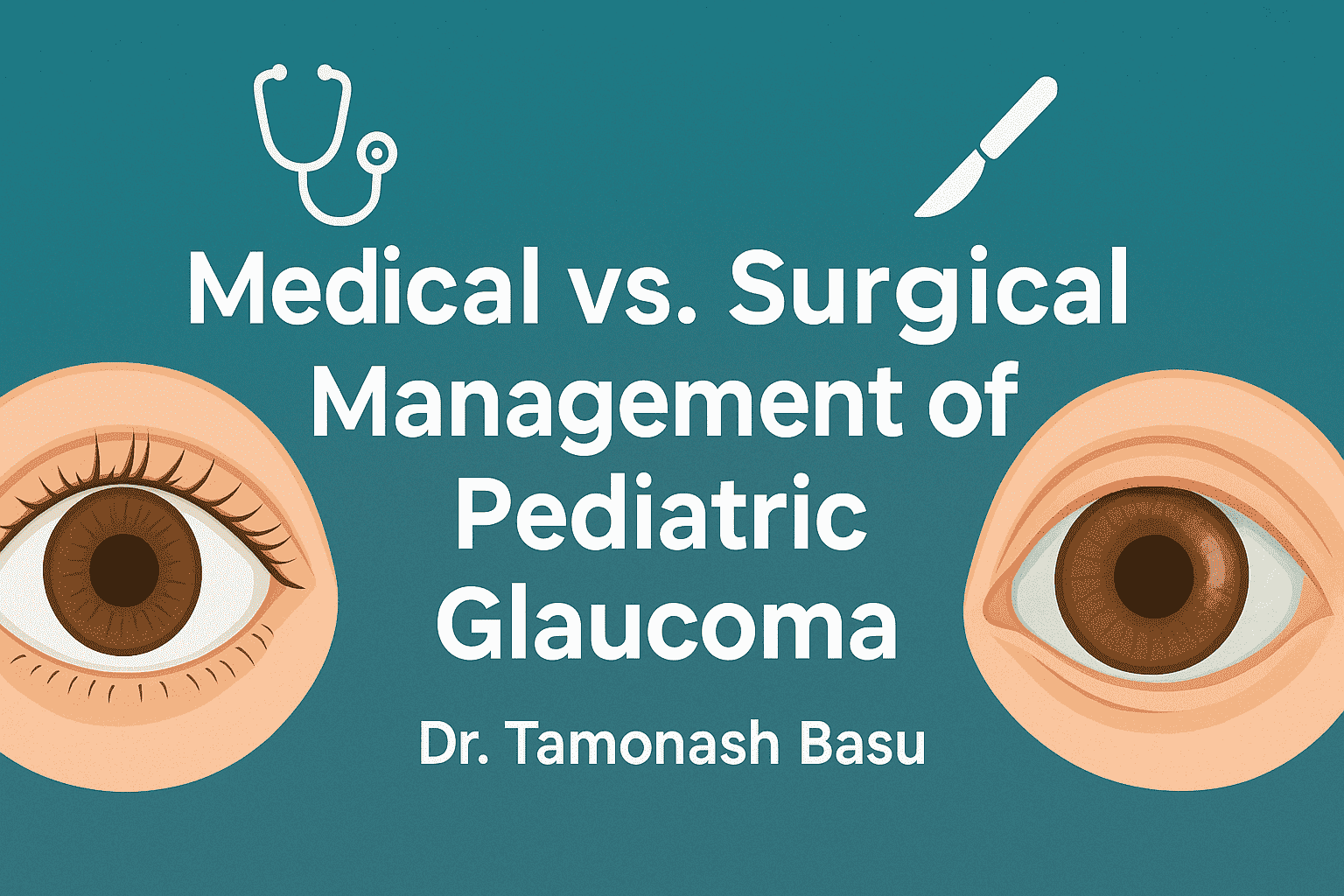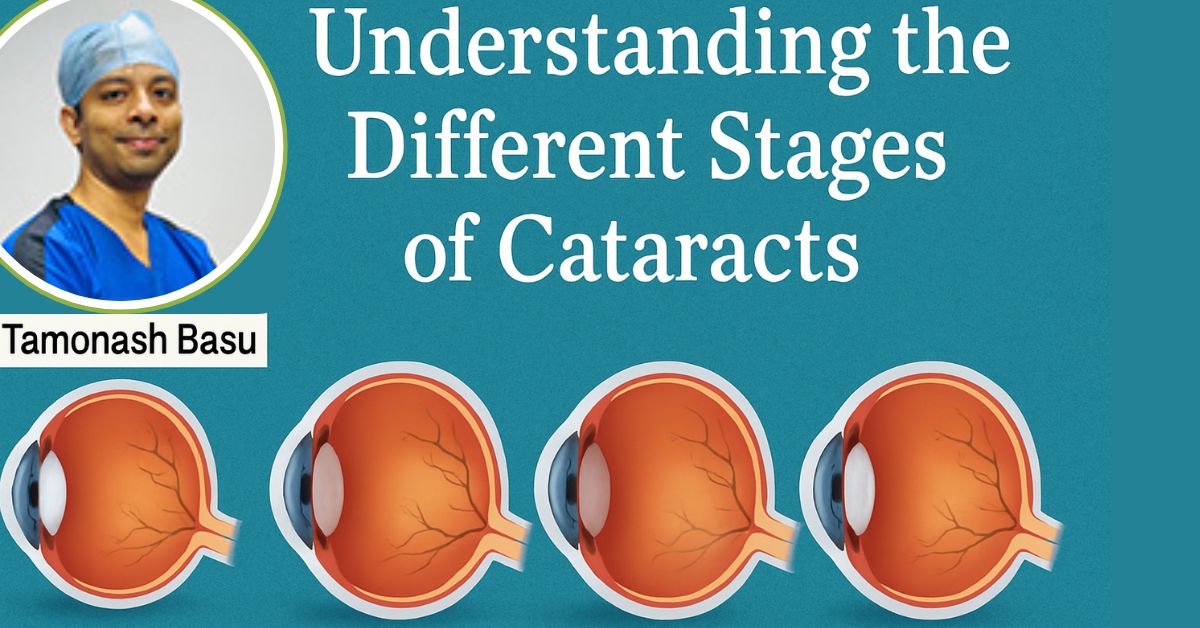Cataracts are one of the most common causes of vision loss. This is especially observed in older adults. The condition develops slowly, and many people don’t realise they have it until it begins to disrupt their daily activities. Understanding the stages of how a cataract develops is important for early detection and timely treatment. In this blog, we’ll take a closer look at what cataracts are, the different stages, how to detect them, and what treatment options are available at each stage.
What is a Cataract?
A cataract is a condition where the natural lens of the eye becomes cloudy. This lens lies behind the iris and the pupil. This clouding occurs when proteins in the lens clump together, preventing light from passing clearly through the lens to the retina. As a result, vision becomes blurry, colours may seem faded, and it becomes harder to see at night. Cataracts are typically caused by ageing, but other factors also contribute. These factors are injury, certain medications, prolonged exposure to UV light, smoking, diabetes, and other eye conditions.
The 4 stages of Cataracts

Stage 1- Incipient Cataract
In this stage, the lens starts to gradually lose its transparency, but the changes are often subtle. Vision may not be significantly affected, although some people notice:
- Slight blurring
- Glare or halos around lights
- Struggle in seeing in bright sunlight
Night driving may start to feel uncomfortable, and reading in dim light might require more effort. This is usually the longest stage and can last for several years without noticeable deterioration.
Stage 2- Immature Cataract
The lens becomes more cloudy, and the visual disturbances become more noticeable. Symptoms often include:
- More blurriness
- Fading of colours
- Increased sensitivity to light
- Frequent changes in eyeglass prescription
During this stage, the cataract is still soft, and the lens retains some clarity. Many people begin to seek medical help around this time due to reduced quality of vision and daily interference.
Stage 3- Mature Cataract
In the mature stage, the lens becomes significantly clouded and non-transparent. The vision is severely affected. Typical symptoms include:
- Severe vision impairment
- Inability to recognise faces or read signs
- Difficulty performing daily tasks
- The lens appears visibly cloudy or grayish-white
This stage indicates that the cataract has fully developed. The risk of risks, such as inflammation or increased intraocular pressure, also rises at this point.
Stage 4- Overripe Cataract
This is the most complex stage. The lens becomes dense and may even begin to liquefy in parts. It can cause further complications like:
- Complete loss of vision
- Leakage of lens protein causes inflammation
- Increased risk of glaucoma
This stage requires urgent medical attention, as the lens may harden, making surgical removal more complicated.
How to detect it?
Early detection of cataracts is possible through regular eye examinations. A comprehensive eye exam typically includes:
- Visual acuity test (to determine the clarity of vision)
- Slit-lamp examination (to check the lens for opacity)
- Retinal exam (to observe the back of the eye)
- Tonometry (to measure intraocular pressure)
If you notice persistent vision problems, such as blurring, glare, or needing more light to read, it’s crucial to consult an ophthalmologist. Early diagnosis can prevent the cataract from progressing to a more severe stage.
Cataract Treatment by Stage

The choice of treatment largely depends on the stage of cataract development and the degree of vision impairment. Here’s how cataracts are typically managed across different stages:
Early-Stage Cataract Treatment
In the incipient stage, surgery is usually not required. Instead, management is dependent on:
- Keeping up with eyeglass prescriptions
- Using magnifying lenses for reading
- Wearing anti-glare sunglasses
- Improving lighting at home and work
Lifestyle modifications such as quitting smoking, controlling blood sugar, and protecting eyes from UV exposure may also slow down progression.
Immature Cataract Treatment
At this stage, cataract surgery becomes a viable option if vision problems interfere with daily activities. If not, similar non-surgical measures as in early-stage management are used. Regular monitoring by an eye specialist is important to track changes.
When surgery is considered, the most common procedure is phacoemulsification. Here, the cloudy lens is emulsified using ultrasound and replaced with an artificial intraocular lens (IOL). It’s a quick, safe, and effective outpatient procedure.
Mature Cataract Treatment
Surgery is strongly recommended at this stage as the cataract significantly impacts quality of life. Waiting too long can lead to complications and make the surgery more difficult. Pre-surgical evaluation includes:
- Biometry (measuring the eye to select the appropriate IOL)
- Retinal evaluation
- Screening for other eye conditions
Post-operative care involves using prescribed eye drops, protecting the eye from dust and injury, and follow-up visits to monitor healing.
Hypermature Cataract Treatment
Urgent surgical intervention is necessary to prevent permanent vision loss or secondary issues like glaucoma. Surgery at this stage is more complex because:
- The lens may be very hard or partially liquefied
- There’s a higher risk of capsular rupture
- Inflammation is more likely after surgery
Modern advancements in cataract surgery, such as femtosecond laser-assisted surgery, help improve precision and outcomes even in complicated cases.
Schedule Your Appointment Today:
- Phone:8544042768
- Online Booking: click here
Conclusion
Cataracts are a gradually progressive yet treatable condition. Understanding the different stages helps individuals recognise the symptoms early and seek timely medical attention. From simple lifestyle changes and updated prescriptions in the early stages to safe and effective surgical treatments in the later stages, there are options available at every step.
If you’re experiencing changes in your vision, don’t ignore them. Regular eye exams, especially after the age of 40, can catch cataracts and other eye conditions early. Timely diagnosis and treatment not only restore vision but also improve your overall quality of life. Always consult a qualified ophthalmologist to determine the best course of action tailored to your specific needs.







